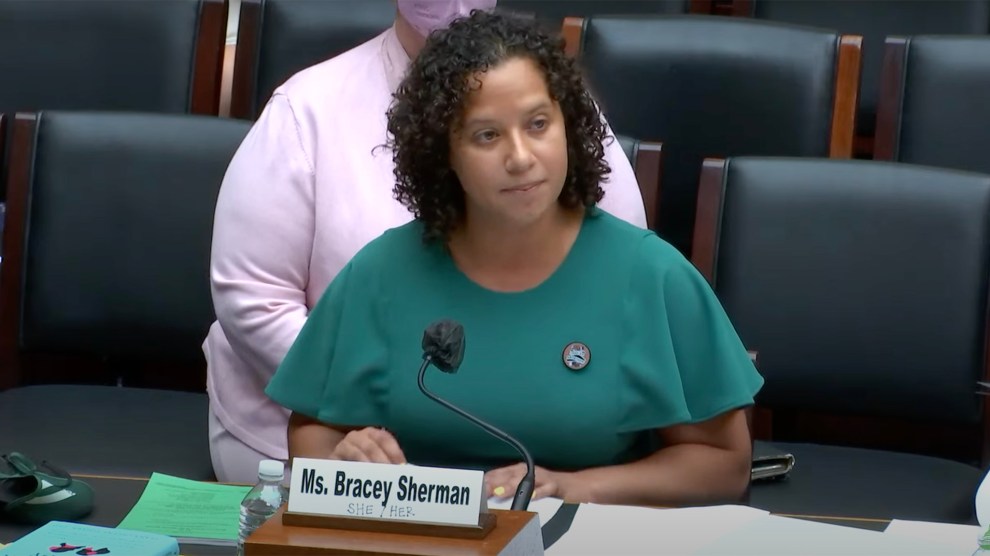
Renee Bracey Sherman testifies before the House Committee on Energy and Commerce.YouTube
Today, likely for the first time in history, an abortion rights activist explained, step-by-step, how to self-manage an abortion before Congress in an official capacity as a witness.
Renee Bracey Sherman, founder and executive director of We Testify, a nonprofit through which people share stories of their abortions, explained that when she found herself unexpectedly pregnant, she became desperate. In the days leading up to her appointment to get an abortion, she considered attempting to induce a miscarriage by throwing herself down a flight of stairs, “as I had seen in the movies or in history books.” Now that Roe has been overturned, she fears that pregnant people may, in earnest, try to end their pregnancies in the dangerous ways that people did before abortion became legal.
Bracey Sherman was trying to change that by describing how to safely self-manage an abortion, according to the World Health Organization in front of some of the people who would probably like to see her in handcuffs for it. “It is one mifepristone pill, followed by four misoprostol pills, dissolved under the tongue, 24 to 48 hours later,” she said. “Or, a series of 12 misoprostol pills, four at a time, dissolved under the tongue, every three hours. There’s no way to test it in the bloodstream, and a person doesn’t need to tell the police what they took.”
Bracey Sherman was testifying before the House Committee on Energy and Commerce regarding the fallout from the reversal of the federal protection to abortion established in the Roe ruling.
















